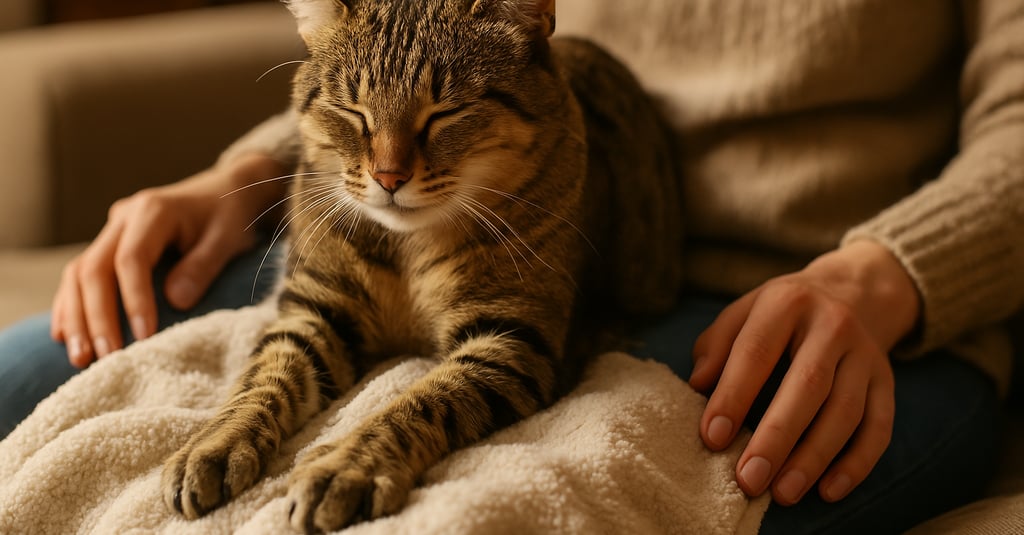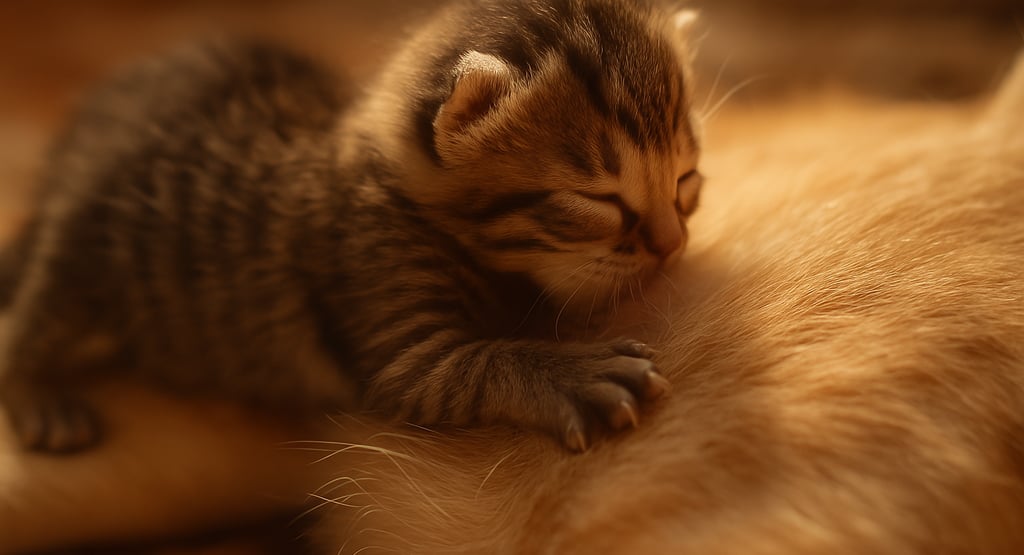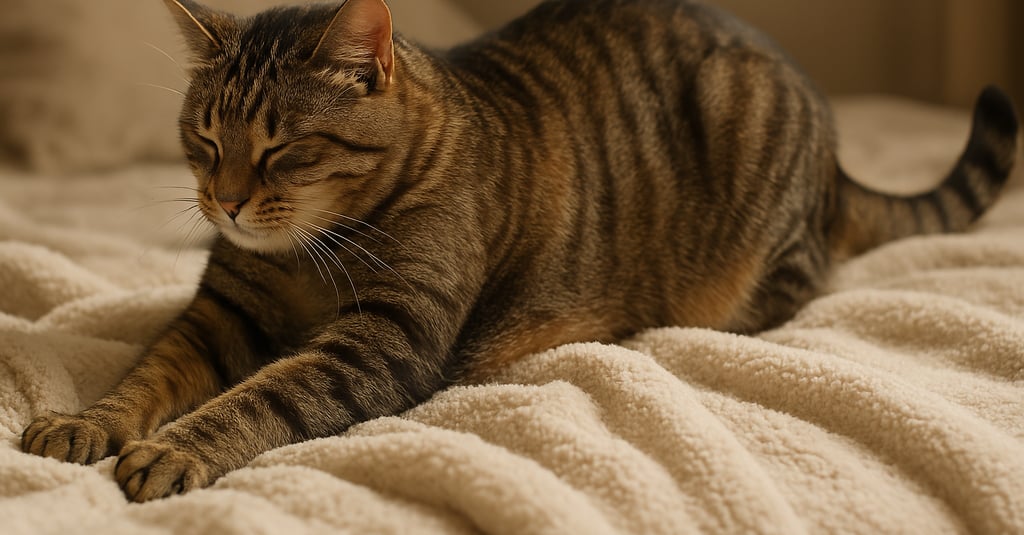Why Does My Cat Knead? Understanding This Quirky Feline Behavior
UNDERSTANDING YOUR MYSTERIOUS FELINE


One of the most endearing and sometimes puzzling behaviors our feline companions exhibit is kneading. Often referred to as "making biscuits" or "playing the piano," this rhythmic pushing of their paws, alternating between left and right, can occur on soft blankets, your lap, or even thin air. While it’s a common feline action, the precise reasons behind why cats knead are multifaceted, likely stemming from a combination of instinctual drives and learned associations. Understanding the motivations behind this quirky behavior can offer deeper insights into your cat's emotional state and their unique ways of communicating comfort and contentment.
Instinctual Roots: Echoes of Kittenhood
The most widely accepted theory about kneading dates back to a cat’s earliest days. Newborn kittens instinctively knead their mother’s belly while nursing. This action serves a vital purpose: the rhythmic pressure helps stimulate the flow of milk from the mother's mammary glands. Because this behavior is so strongly associated with the comfort, nourishment, and security of nursing, it’s believed that cats carry this instinct into adulthood.
When an adult cat kneads, they may be reverting to this deeply ingrained behavior, subconsciously associating the action with the profound sense of safety and contentment they experienced as kittens. This is why kneading is often accompanied by purring, drooling, or a blissed-out, sleepy expression – all signs of a very relaxed and happy cat.
Marking Territory: Leaving Their Scent
Cats are territorial creatures, and they have various ways of marking their domain. One such method involves scent glands located in their paws. When a cat kneads on a surface, these glands release pheromones, which are unique chemical signals. By kneading on your lap, their favorite blanket, or a particular spot on the sofa, they are essentially depositing their scent and claiming that area (or you!) as their own.
This scent marking isn’t an aggressive act of dominance but rather a way for them to create a familiar and secure environment. Surrounding themselves with their own scent can be very comforting and reassuring for a cat, reinforcing their sense of belonging and safety in their territory.
Creating a Comfortable Nest
Another theory suggests that kneading is an ancestral behavior related to preparing a comfortable place to rest or give birth. Wild feline ancestors would have kneaded down tall grasses or soft earth to create a cozy and safe nest for themselves and their offspring. This instinct to prepare a sleeping spot might still be present in domestic cats today.
When your cat kneads a soft blanket or your pillow before settling down for a nap, they might be engaging in this age-old ritual of nest-making. The rhythmic pushing could be their way of arranging their bedding to the perfect level of comfort and security, ensuring a peaceful slumber.
Expressing Affection and Contentment
For many cat owners, kneading is perceived as a clear sign of affection and contentment, and there's a lot of truth to this. If your cat chooses your lap as their preferred kneading spot, it’s often a strong indication that they feel safe, secure, and deeply bonded with you. The act of kneading, combined with purring and perhaps a gentle head-butt, is their way of saying, "I love you, I trust you, and I feel completely at ease in your presence."
While the claws can sometimes be a bit sharp during these affectionate moments, it’s important to recognize the positive intent behind the behavior. Providing a soft blanket or towel on your lap can help protect you while still allowing your cat to express their contentment.
Self-Soothing and Stress Relief
Just as some humans might fidget or engage in repetitive motions to calm themselves, cats may knead as a way to self-soothe or relieve stress. The rhythmic, repetitive action can have a calming effect, helping them to relax in situations where they might feel anxious or unsettled.
If you notice your cat kneading more frequently during times of change or stress (e.g., after a move, the introduction of a new pet, or loud noises), it could be their way of coping with the situation and seeking comfort. Providing a stable and predictable environment, along with plenty of safe spaces, can help reduce their anxiety levels.
Female Cats and Estrus (Heat)
Unspayed female cats may exhibit increased kneading behavior when they are in estrus (heat). This kneading is often accompanied by other signs of being in heat, such as increased vocalization, restlessness, and a characteristic posture (lordosis). In this context, kneading can be part of their mating ritual behavior.
What If the Kneading is Uncomfortable?
While kneading is generally a positive behavior, those sharp little claws can sometimes make the experience uncomfortable for the human on the receiving end. If your cat’s kneading is painful, here are a few gentle ways to manage it:
Keep Claws Trimmed: Regularly trimming your cat’s claws can significantly reduce any discomfort caused by kneading.
Provide a Barrier: Place a thick, soft blanket or towel on your lap before your cat settles down to knead. This protects your skin while still allowing them to engage in their comforting behavior.
Redirect Gently: If the kneading becomes too intense, you can gently try to redirect their attention to a toy or encourage them to shift their position. Avoid punishing them, as this can create fear and anxiety, potentially damaging your bond.
Soft Paws/Nail Caps: These are small vinyl caps that can be glued onto a cat’s claws. They are a temporary solution that can prevent scratching, but they need to be replaced regularly as the claws grow.
Understanding why your cat kneads allows you to appreciate this unique feline behavior as a complex expression of instinct, comfort, affection, and communication. Whether they are reliving kittenhood memories, marking their territory, or simply showing you how much they adore you, "making biscuits" is a charming quirk that highlights the deep emotional lives of our feline friends.
CTA Teaser: Curious about other mysterious feline behaviors and what they mean? Our comprehensive guide, "Decoding Your Cat: A Guide to Feline Behavior & Communication," unravels the secrets behind why cats do what they do, helping you understand and connect with your cat on a deeper level. Get your copy and become fluent in feline!




Sustainable Cat Care
At EcoCatCare, we provide resources that help cat parents discover how sustainable choices can create healthier, happier lives for their feline companions while contributing to a healthier planet.
EcoCatCare © 2025. All rights reserved
